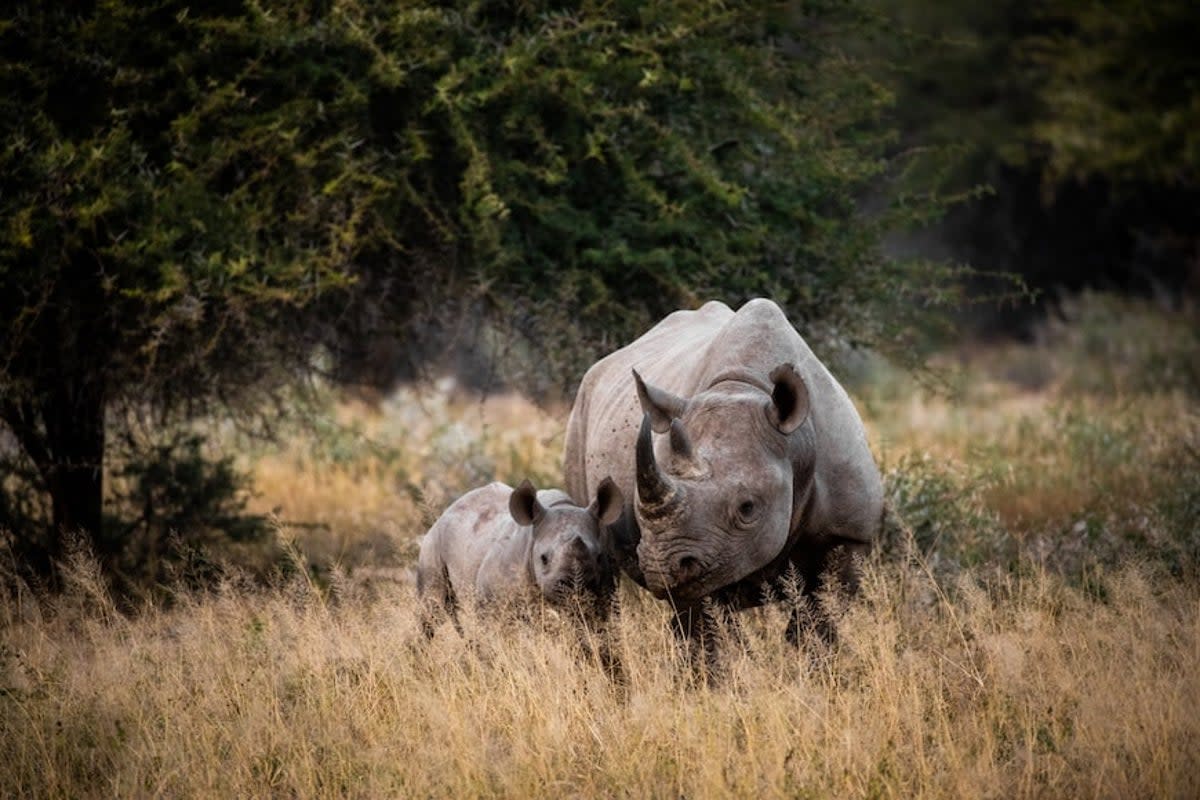Botswana presents intensified rhino anti-poaching efforts at global conference for trade in wild species

Botswana’s government has presented to the ongoing CITES CoP-19 in Panama a detailed document on the country’s efforts to contain rhino poaching which increased at least 100 fold between 2018 and 2020.
The country recorded two rhino poaching incidents in the five years between 2012 and 2017 with zero incidents reported in 2012, 2014, 2015, and 2017. In complete contrast, at least 138 rhinos were poached in the following five years between 2018 to date.
The sudden spike in rhino poaching has been largely attributed to the government’s decision to disarm the anti-poaching rangers in early 2018.
Calls to re-arm the Department of Wildlife and National Parks (DWNP) anti-poaching unit following the alarming increase in poaching have been shot down by the responsible authorities.
The government has often been accused by conservationists of refusing to admit the true extent of the damage caused by the disarmament.
A report submitted to the ongoing Convention on International Trade in Endangered Species of Wild Fauna and Flora (CITES) Conference of the Parties (CoP-19) by Botswana this week however acknowledges the surge in rhino poaching since 2018, albeit with no reference to the disarmament.
“Even though the dramatic surge in organised rhino poaching in the region has been going on for decades, Botswana was spared the scourge until 2018 when organised rhino poaching eventually hit the country,” the document reads, adding “This increase in rhino poaching in
Botswana coincided with a decline of rhino poaching in South Africa from 2018 to 2020, suggesting a displacement of the poaching syndicates from South Africa to Botswana. The recent decline in rhino poaching in Botswana (2021 and 2022, relative to 2020) coincides with the increase in rhino poaching in Namibia and South Africa, further suggesting displacement of the poaching syndicates across the sub-region.”
Botswana says more than 99% of the poaching occurred in the Okavango Delta and some parts of Moremi Game Reserve (situated around the delta). Typically, the report says, the swampy Okavango Delta and adjacent areas are the most difficult and challenging terrain for law enforcement officers to patrol.
“As of 13 November 2022, there are an estimated two hundred and eighty-five white rhinos and twenty-three black rhinos in various properties across Botswana.”
The government says they, together with non-state collaborators, have come up with initiatives to mitigate poaching threats, which interventions, they say, are working as demonstrated by the decline in the number of poaching cases during 2021 and 2022 (relative to the 2020 peak).
At least 18 rhinoceroses were poached in 2018, 31 in 2019, 55 in 2020, 33 in 2021, and six in 2022.
“The Government has deployed a large contingent of the Army into the rhino range area, including in Private Reserves and game farms, to support the Department of Wildlife and
National Parks and private game ranchers to fight poaching by armed and highly organised criminal gangs involved in rhino poaching. Similarly the Police and State Intelligence are involved in counter-poaching operations in order to augment the Department of Wildlife and
National Parks’ efforts to combat wildlife crime. The National Anti-Poaching Strategy provides among others Standard Operating Procedures (SOPs) that govern the inter-agency relationships, and so there is clarity in how the law enforcement agencies work together on anti-poaching and illegal wildlife trade operations,” Botswana says in their report to CITES.
The Government of Botswana also says they took a deliberate decision to move all rhinos in high-risk-areas to areas that are safer, with the intention of reintroducing them back into wilderness areas once the situation improves.
In addition, the government says, security has been strengthened at all rhino-holding facilities including those under private ownership. “To date the vast majority of rhinos which were remaining in the delta have been translocated to fenced establishments,” Botswana says.
Other anti-rhino poaching initiatives in the past few years have included dehorning.
The Government of Botswana took a decision to dehorn all rhinos in the wild in an effort to reduce their appeal to poachers and subsequently discourage poachers from travelling to the country for hornless animals. Private sanctuaries housing rhinos were also encouraged to dehorn their animals.
“As a response to poaching that occurred in the wild, over one hundred Southern white rhino from the wild population were dehorned in 2020 to mitigate risk of poaching,” Botswana has said. The CITES CoP-19 commenced on November 14, 2022 in Panama and will run until November 25.
This article is reproduced here as part of the African Conservation Journalism Programme, funded in Angola, Botswana, Mozambique, and Zimbabwe by USAID’s VukaNow: Activity. Implemented by the international conservation organization Space for Giants, it aims to expand the reach of conservation and environmental journalism in Africa, and bring more African voices into the international conservation debate. Written articles from the Mozambican and Angolan cohorts are translated from Portuguese. Broadcast stories remain in the original language.
Read the original story here:


